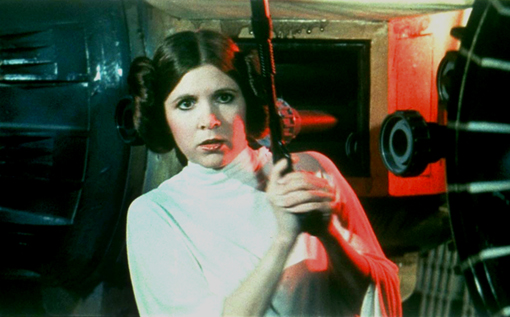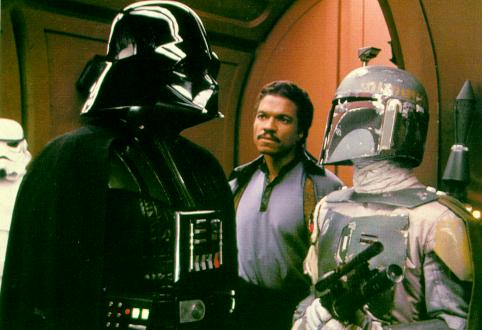J.J. Abrams, you’re my only hope.
It was announced recently that J.J. Abrams has been hired to direct the first Star Wars feature film since Disney acquired Lucasfilm, joining Academy Award-winning screenwriter Michael Arndt (Little Miss Sunshine, Toy Story 3) who has been hired to pen the screenplay. They are both top talents and I’m hoping they can rekindle my interest in the Star Wars universe.
I had a thought about one of the elements that was missing from the Star Wars prequels. I’ve been reading Alan Sepinwall’s excellent book The Revolution Was Televised, in which he interviews Ronald D. Moore, the co-creator of Battlestar Galactica (2003), on his experience writing for various Star Trek television shows in the 1990s. Moore got so frustrated with the storytelling constraints that he quit his job on Star Trek: Deep Space Nine after writing a manifesto explaining how, in his opinion, (and I’m paraphrasing here) the Star Trek universe had run its course because none of the characters were allowed to have flaws. For them to go through any kind of change, the writers needed to come up with some kind of fantastic conceit to effectively pull them outside of their character. For example, a character would be put under an alien trance or undergo a mind meld with another creature. According to Moore, these devices were getting increasingly silly and forced, thus were eroding the audience’s belief in the dramatic reality of the show.
Moore’s entire goal with a Battlestar Galactica reboot was to make a Science Fiction show that was real and relevant to today’s world. He and his writing team eventually seized upon the concept of weaving in themes of the post-9/11 “war on terror” era, and went on to create one of the finest Science Fiction stories in television or film of the past decade. Certainly better than the Star Wars prequels, right? In fact, I’ve wondered if the opening space battle in Episode III: Revenge of the Sith was directly influenced by Battlestar Galactica, as it seems to share a very similar dark tone that stands out in sharp contrast from the other Star Wars films. Anyone else have that feeling?
This got me thinking about The Empire Strikes Back, the moment when Leia calls Han a “stuck up, half-witted, scruffy-looking Nerf herder” and he replies “Who’s scruffy lookin’?”
It’s a great character moment that shows off one of Han Solo’s two major character flaws: vanity. (His other great flaw is his self-interest, not being willing to stick his neck out for others.) And Princess Leia is demonstrating her stubborn and scrappy nature that made us all root for her. This kind of exchange explores and expresses these traits in a comical way.
Now think about the prequels. Other than Anakin’s slowly growing lust for power, who else had flaws? Or even some personality? George Lucas’ plotting may have been ponderous, but the truly fatal flaw in the trilogy was the lack of character work. Dramatic flaws, arcs, misbehaviors, ticks, Achilles Heels, all that great stuff…few and far between.
And that’s the key to the new, proposed trilogy. Arndt and Abrams have to make Star Wars human again. They must give us characters we truly invest in, and make them flawed beings so there’s true conflict and change to be mined from their scenes.
While they’re at it, a little realism and relevance couldn’t hurt.
My two cents.
Good Luck and Happy Writing,
Dan
“Dan has a no-nonsense approach to screenplay analysis that cuts through the bull and delivers the goods. A must read for serious screenwriters.”
-J. Stephen Maunder, writer/director





Leave a Reply
Want to join the discussion?Feel free to contribute!